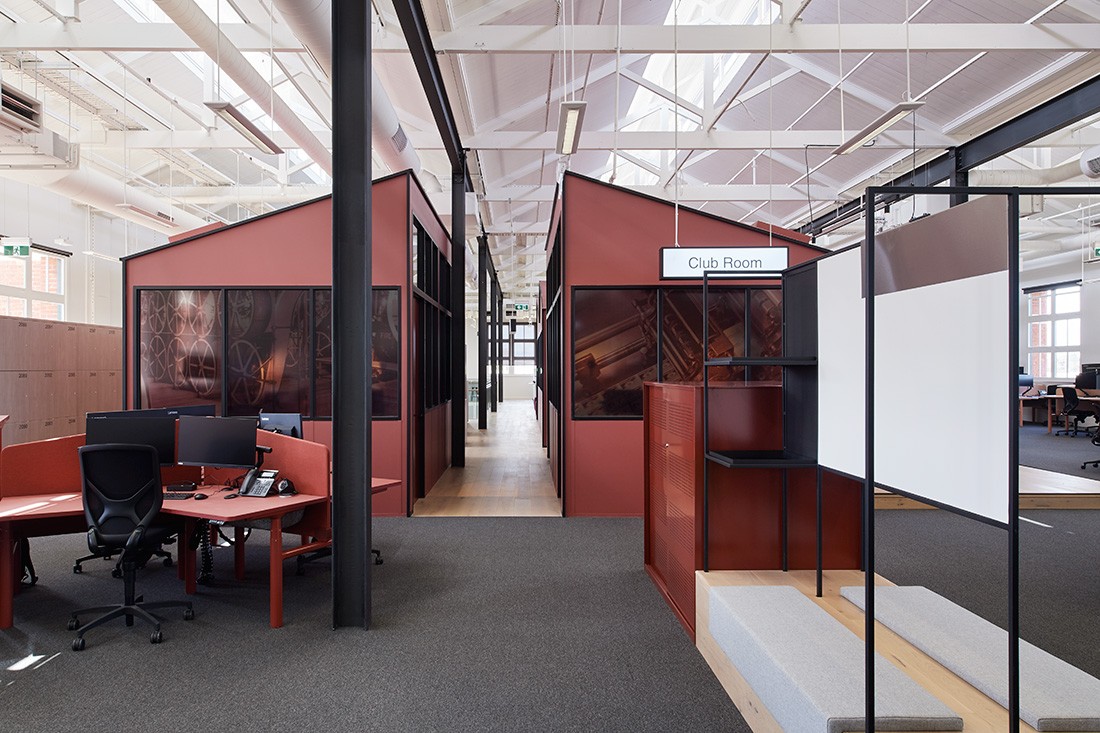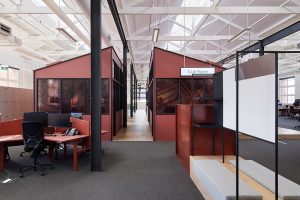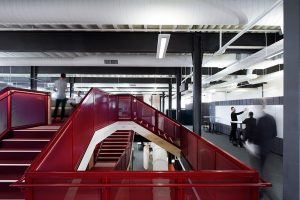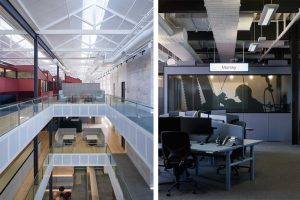
-
26 April 2018
Is there anything as dynamic as a revolution? Rapid, rambunctious, and radical, revolutions are often over as swiftly as they begin, leaving behind a swirl of rubble to be rebuilt and rearranged into something new. In short: revolutions are great, but they can only last so long.
Take, for example, the activity-based working (ABW) revolution. When it first stormed the scene in the mid-2000s, ABW’s approach to old school, formulaic design was heralded as a breath of fresh air in an increasingly stale design sector. Workers celebrated the freedom and enhanced wellbeing afforded by the groundbreaking, flexible designs, while higher ups cheered the spike in productivity and worker retention. Then ABW evolved. To keep up with its ballooning popularity, it was reduced to its most basic elements, co-opted for sprawling open plan offices and workspaces littered by colourful couches and ottomans. Soon, spaces verged toward the ridiculous, incorporating slides, ball pits, and cargo net hammocks. And just like that, as quickly as it began, the ABW revolution was over.
Now, nearly 15 years later, designers are stoking the embers of ABW, breathing new life into arguably one of the 21st century’s most important design milestones. With their new Cremorne headquarters for Australian energy suppliers Red Energy, Melbourne interior designers Carr Design Group did just this, marking a renaissance for the ABW movement. The feeling of revolution is fitting, given that Red Energy is an energy provider like no other. Since 2004, the Australian owned energy company has drawn its power from the Snowy Mountains Hydro-Electric scheme, which is roundly regarded as a civil engineering wonder of the modern world. Red Energy is also committed to giving back to Australian communities by way of affordable energy and meaningful connections with local sporting clubs, associations, and charities that share their forward-facing values.


For their new Cremorne headquarters, Red Energy tapped into this revolutionary and community-oriented spirit, crafting workspaces that reflect a fresh approach to ABW. Like any good revolutionary, Carr Design Group did not build from the ground up, but rather looked to the past for inspiration. Nestled into the former Bryant and May factory – one of Melbourne’s most iconic heritage buildings – the new fitout was treated as a sculptural insert within the existing building envelope, and carefully enfolds heritage elements including an exposed truss ceiling and expansive factory bay windows. A richly textured, warm material palette beguiles the industrial setting and offsets shades of deep brick red and burnt orange with cool blue-greys and creamy whites.
The new offices bring together over 1000 Red Energy business support and customer interaction staff, all of whom require very different work space typologies. To accommodate their various needs and activities, the plan was arranged in a series of ‘pavilions’, ‘neighbourhoods’, and ‘hubs’ set along a central circulation path. The overlapping spaces range from fixed to flexible and open to focused, and encourage workers to explore beyond the boundaries of their own workspace. Linking the four tenancy levels is a brick red sculptural steel mesh stair that evokes the red brick of the building’s exterior and funnels circulation into new spaces for breakout, collaboration, and interaction.
“Inspired by a commitment to celebrate and respect the historical importance and unique architectural form of this culturally significant structure, the fitout was treated almost as a sculptural insert with all internal built form detached from the perimeter in a bid to respect the existing exposed truss ceiling, expanse of original factory bay windows and important heritage details.” – Carr Design.
At the briefing stage, Red Energy emphasised investment in workplace health and wellbeing in addition to a renewed focus on training and development. To make these goals a reality, Carr Design Group turned to Zenith and their broad catalogue of flexible, functional commercial furniture. Across the office’s four levels, Zenith’s signature sit to stand Orbis workstation delivers both practicality and comfort without compromising on style. Like all Zenith solutions, Orbis prioritises people and the user experience. Red Energy employees can now enjoy a suite of intuitive features that make work life easier: LED reminders to sit or stand, a patented wire management system for keeping things tidy, Bluetooth app control, and the ability to store up to four preset worktop heights.
The new office also makes extensive use of the Belite Chair, designed at all points with supreme functionality and ergonomic support for the end user in mind. Characterised by minimal parts and componentry, the responsive design of Belite celebrates flexibility and ease. Responding to users’ postures and agile uses throughout the day, Belite’s form is uniquely positioned to alleviate problems of lumbar support while still never compromising on sleek, sculptural forms. The chair’s elastometric skin (held in a contoured backframe and seat pan) alters to suit changing user positions across different tasks and requirements throughout day. Coupled with a dynamic suspension system that takes the user’s bodyweight and movements as a counterbalance, Belite’s 270-degree radius of ergonomic support ensures that irrespective of function and mobility, end user health and wellbeing remains at the forefront of concern. Simplified, innovative and user-centric at every turn, Belite’s intuitive construction also means that the fussiness of adjustments, levers and knobs is finally eschewed once and for all. In its stead, Belite’s seven major elements is a feat of streamlining – ultimately informing the chair’s minimised mass (being 57% lighter than most high-performance task seating) – to guarantee dynamism between rest, application and varied use.
Like the vast majority of the Zenith portfolio, Belite carries an inspired sustainability approach. Constructed from postconsumer recycled PET drinking bottles, corn byproduct and foam based on soy as a raw material, Belite’s sustainable manufacture dovetails with the product’s lightweight, minimised form to truly deliver a ‘conscious’ artefact: of the environment, of its user and of the evolving profile of the commercial landscape. Complementing the Orbis Workstation specified throughout, Belite cuts an aesthetic figure just as much as it does a functional one: as clean, streamlined and multitasking as even the most agile of workers.


Fleeting though revolutions may be, their effects are indelible and their legacies indestructible. Often, the most interesting repercussions occur long after the final aftershocks have subsided and a new sense of clarity allows the best pieces of the revolution to be identified and carried into the future. As much is evident in the new Red Energy Cremorne headquarters, which heralds a rebirth of the ABW revolution, albeit reimagined for the changing needs of today’s commercial spaces. It’s bold, it’s bright, and there’s nothing quite like it anywhere else. Vive la révolution!
Now having launched in Shanghai, Zenith remains squarely at the vanguard of supplying the latest design innovation for the commercial, health, hospitality and education sectors throughout more than five nations and their wholly complete network of service centres. While each of their showrooms celebrate Zenith‘s vast array of products and international portfolio of brands from across the region and beyond. Shrewdly backing this comprehensive design offering with a team of sector specialists, steering managers, comprehensive service delivery and a dedicated R+D team that work around the clock to improve the profile and performance of design across many sectors, Zenith has emerged as one of this region’s leading suppliers – collaborating with local design talent and their own manufacturing facilities to tailor design solutions in a culturally-aware holistic brand service.
Photography: Earl Carter
Zenith is your Official Platinum Partner of the 2018 INDE.Awards. Read more about Zenith’s inspiring journey here.
